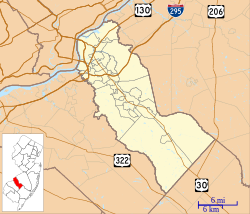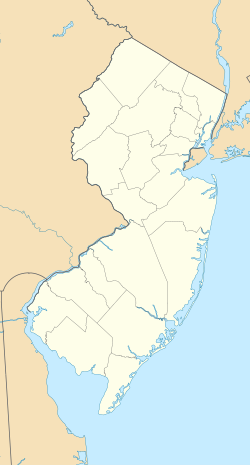Walt Whitman House
|
Walt Whitman House
|
|

The Walt Whitman House in Camden, New Jersey
|
|
| Location | Camden, New Jersey |
|---|---|
| Coordinates | 39°56′33″N 75°7′26″W / 39.94250°N 75.12389°WCoordinates: 39°56′33″N 75°7′26″W / 39.94250°N 75.12389°W |
| Built | circa 1848 |
| NRHP Reference # | 66000461 |
| Significant dates | |
| Added to NRHP | October 15, 1966 |
| Designated NHL | December 29, 1962 |
The Walt Whitman House is a historic building in Camden, Camden County, New Jersey, United States, which was the last residence of American poet Walt Whitman, in his declining years before his death. It is located at 330 Dr. Martin Luther King Jr. Boulevard, known as Mickle St. during Whitman's time there.
In 1873, Whitman suffered a paralytic stroke and, in May the same year, his mother Louisa Whitman died; both events left him depressed. Louisa was in Camden, New Jersey at the time and Whitman arrived three days before her death. He returned to Washington, D. C., where he had been living, only briefly before returning to Camden to live with his brother George, paying room and board. The brothers lived on Stevens Street and Walt lived there for the next eleven years. Whitman spent the Christmas of 1883 with friends in Germantown, Pennsylvania while his brother was building a farmhouse in Burlington, New Jersey that included accommodations for the poet. Instead of moving with his brother, however, Whitman purchased the Mickle Street House in Camden in the spring of 1884. He was 65, and it was the first home he owned. Whitman called it his "shanty" or "coop", emphasizing its shabbiness. His brother George did not approve of the purchase and the decision strained their relationship. Others questioned Whitman's judgment as well. A friend called it "the worst house and the worst situated". Another friend noted it "was the last place one would expect a poet to select for a home."
The lot on which the home was standing was purchased in 1847 by a clerk named Adam Hare for $350. It was likely Hare who built the house. By the time Whitman bought it, it was a two-story row house with six rooms and no furnace. Its recent occupant was Alfred Lay, the grandfather of a young friend of Whitman. When Lay couldn't pay the rent for March, Whitman loaned him the $16 he needed. Whitman soon after purchased the home for $1,750, which he earned from recent sales of a recent edition of Leaves of Grass and through a loan from publisher George William Childs. Lay continued to live there with his wife, cooking to cover part of their rent and paying $2 a week; the Lays moved out on January 20, 1885. Whitman later invited Mary Davis, a sailor's widow living a few blocks away, to serve as his housekeeper in exchange for free rent in the house. She moved in February 24, 1885, bringing with her a cat, a dog, two turtledoves, a canary, and other assorted animals.
...
Wikipedia



